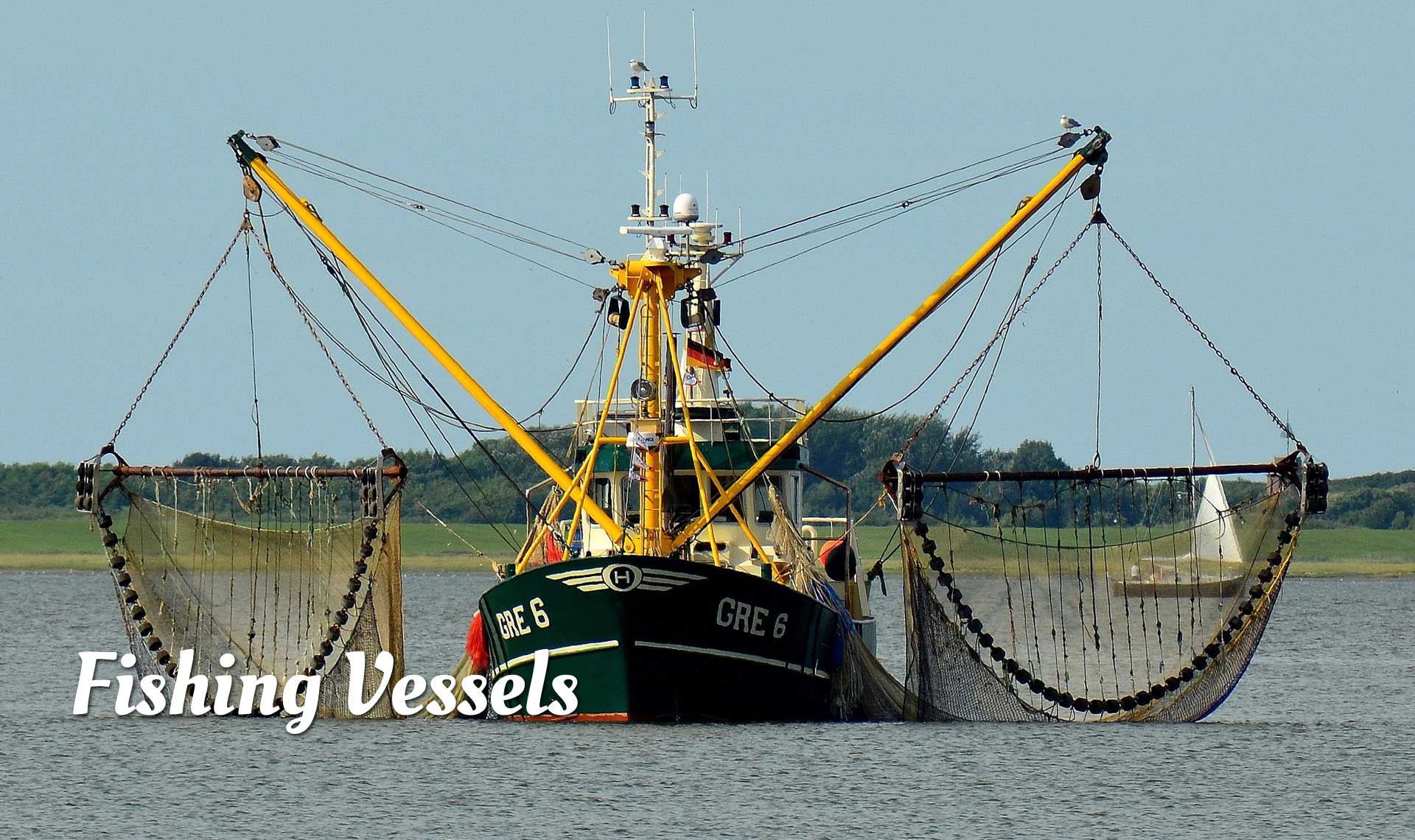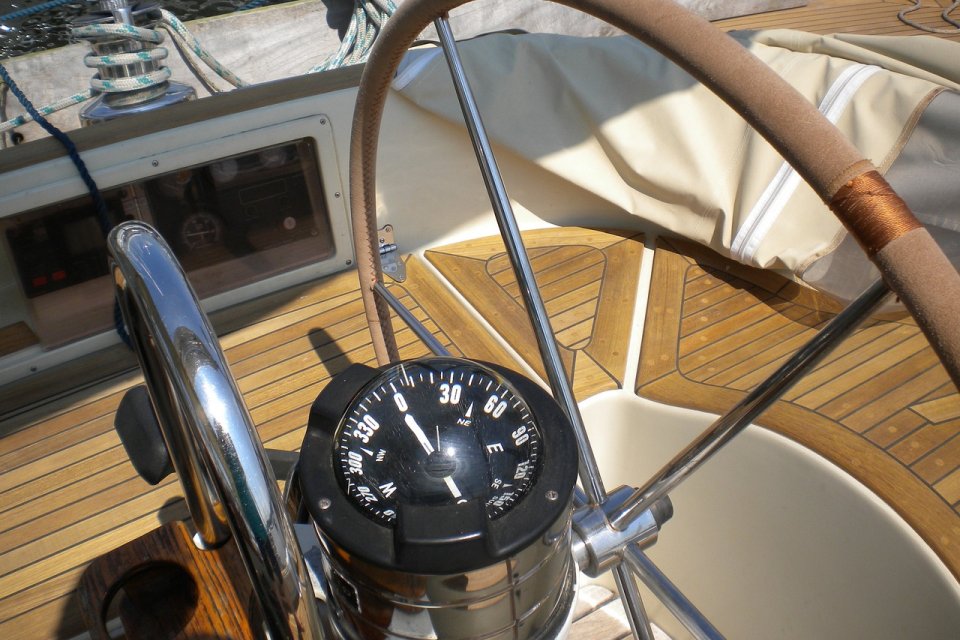Fishing Vessels & Boats
Welcome to the Fishing Vessel & Boats Section, here you will find information on the maintenance programme, the membership process, and how to access the maintenance database.
Fishing is one of the most dangerous jobs in the world. The worldwide most common cause of accidents on fishing vessels derives from machinery breakdowns resulting from poor maintenance. Our Maintenance Programme enhances safety and efficiency while promoting long term economic benefits.
…………………………………………………………………………………………………………………………………………………………………………………………………
Types of Fishing Boats
Fishing vessels and boats come in various types and sizes, each designed for specific fishing methods and environments. These vessels are essential for commercial and recreational fishing activities. Here's an overview of some common types of fishing vessels and boats
Commercial Fishing Trawlers
Trawlers are large, seaworthy vessels designed for catching fish in bulk. They use trawl nets that are dragged along the ocean floor or through the water. Trawlers can be equipped for a variety of fish species, including shrimp, cod, and haddock.
Longliners
Longliners are vessels equipped with long fishing lines that have multiple hooks, often used for catching species like tuna, swordfish, and halibut.
Purse Seiners
Purse seiners are typically used to catch schooling fish like tuna, sardines, and herring. They use a large net to encircle the fish, and then the bottom of the net is drawn closed to "purse" the catch.
Gill-netters
Gill-netters employ gill-nets, which are vertical panels of netting that hang in the water. Fish swim into these nets and become entangled by their gills.
Lobster Boats
Lobster boats are specialized vessels designed for trapping lobsters in pots or traps. They are often smaller boats with hydraulic systems for lifting traps from the water.
Shrimp Boats
Shrimp boats, also known as trawlers, use large nets to drag along the seafloor to catch shrimp. They are commonly used in commercial shrimp fishing.
Tuna Boats
Tuna boats are designed for catching large pelagic fish like tuna. They are equipped with heavy-duty fishing gear, such as longlines and purse seines.
Drift Boats
Drift boats are small, flat-bottomed boats designed for fishing in rivers and streams. They are often used by anglers for fly fishing and have a unique design to navigate shallow and rocky waters.
Center Console Boats
These versatile boats are popular for recreational fishing. They feature an open deck with a central console for the helm and typically have rod holders, baitwells, and other fishing amenities.
Bass Boats
Designed for freshwater fishing, bass boats are typically small, high-speed vessels with platforms for casting and fishing for bass.
Kayaks and Canoes
Kayaks and canoes are used for fishing in calm waters. They provide a quiet and low-impact way to access fishing spots.
Commercial Fishing Vessels (Small)
Many small fishing boats are used for various types of fishing, including line fishing, pot fishing, and netting, depending on the species and location.
Sport-fishing Yachts
Sport-fishing yachts are luxurious vessels equipped for deep-sea fishing. They offer comfort and amenities while catering to anglers' needs.
Ice Fishing Shanties
Ice fishing shanties are small, often portable structures used by ice anglers. They provide shelter and protection from the cold while ice fishing.
Dories
Dories are small, flat-bottomed boats used for inshore fishing, particularly in regions with strong tidal currents.
Each type of fishing vessel is designed to meet specific fishing requirements, whether for commercial or recreational purposes, and they vary in size, equipment, and features to cater to the unique needs of the fishing activity and the environment in which they operate.
………………………………………………………………………………………………………………………………………………………………………………………………………………………………………………………………………
Find a Fishing Boat - findafishingboat.com
Whether you're a seasoned commercial skipper, a weekend angler, or just starting in the industry, Find a Fishing Boat is your go-to resource for everything you need. From sturdy trawlers to small inshore vessels, they help fishermen track down the perfect boat to match their needs. The platform connects buyers and sellers, making it easier than ever to find the right vessel, equipment, and gear.
No matter your trade—whether it’s trawling, netting, longlining, or simply fishing for leisure—Find a Fishing Boat helps you stay afloat and never far from the next great opportunity.
- Find a Fishing Boat (FAFB): A website dedicated to the fishing community, offering listings of boats for sale and crew wanted advertisements. Skippers and companies across the UK, Ireland, and Europe use this platform to hire crew or workers for their fishing boats. findafishingboat.com.
- Sea Angler Magazine: A publication tailored for angling enthusiasts, providing top tips for both shore and deep-sea fishing. While it primarily focuses on fishing techniques and gear, it may also contain advertisements related to boats and equipment. magazine.co.uk
Additionally, the UK Commercial Fishing Crew Database is a Facebook group where UK-based skippers and crew members exchange information about job opportunities. Membership is restricted to individuals based in the UK, Channel Islands, or Isle of Man.
………………………………………………………………………………………………………………………………………………………………………………………………………………………………………………………………………
Maintenance Programme
It is a globally accessible Maintenance Programme designed to suit the individual needs of owners, skippers, and those responsible for the maintenance and operation of their fishing boats.
The maintenance programme covers the mechanical, electrical, domestic, deck machinery, and boat safety procedures on your vessel, and automatically resets the programme after maintenance.
Maintenance Plans
Primary Plan covers all the mechanics of a boat from the fuel tank to the propeller and takes priority over all other plans. The Primary Drive Plan is the drive system for your vessel – both these plans include the critical spare parts list. The Secondary Plan covers the auxiliary and domestic systems.
Maintenance Tasks
The tasks are adapted to a vessel’s needs and can be either carried out by the local boatyard or the maintenance crew aboard the vessel. Either way, an owner/skipper is encouraged through our programmes to manage a variety of maintenance tasks, thus understanding better the systems on their boat.
Maintenance Schedules
Maintenance Scheduling is a way to help the planning of maintenance. Yearly monthly, weekly, daily, and even hourly checks form part of the maintenance schedule. We have designed into the programme flexible scheduling which can be readily adapted to a Fishing Boats working programme, and periods alongside.
Fishing Boats - Fire & Safety Equipment Maintenance
Boat Safety procedures and basic fire equipment maintenance practices are essential for the well-being and safety of your boat and crew.
In many countries the authorities are now looking for paperwork showing test certificates and expiry dates for fire and safety equipment, VHF and AIS certification, plus LPG testing. These are systems covered by imardex-marine’s Maintenance Programme.
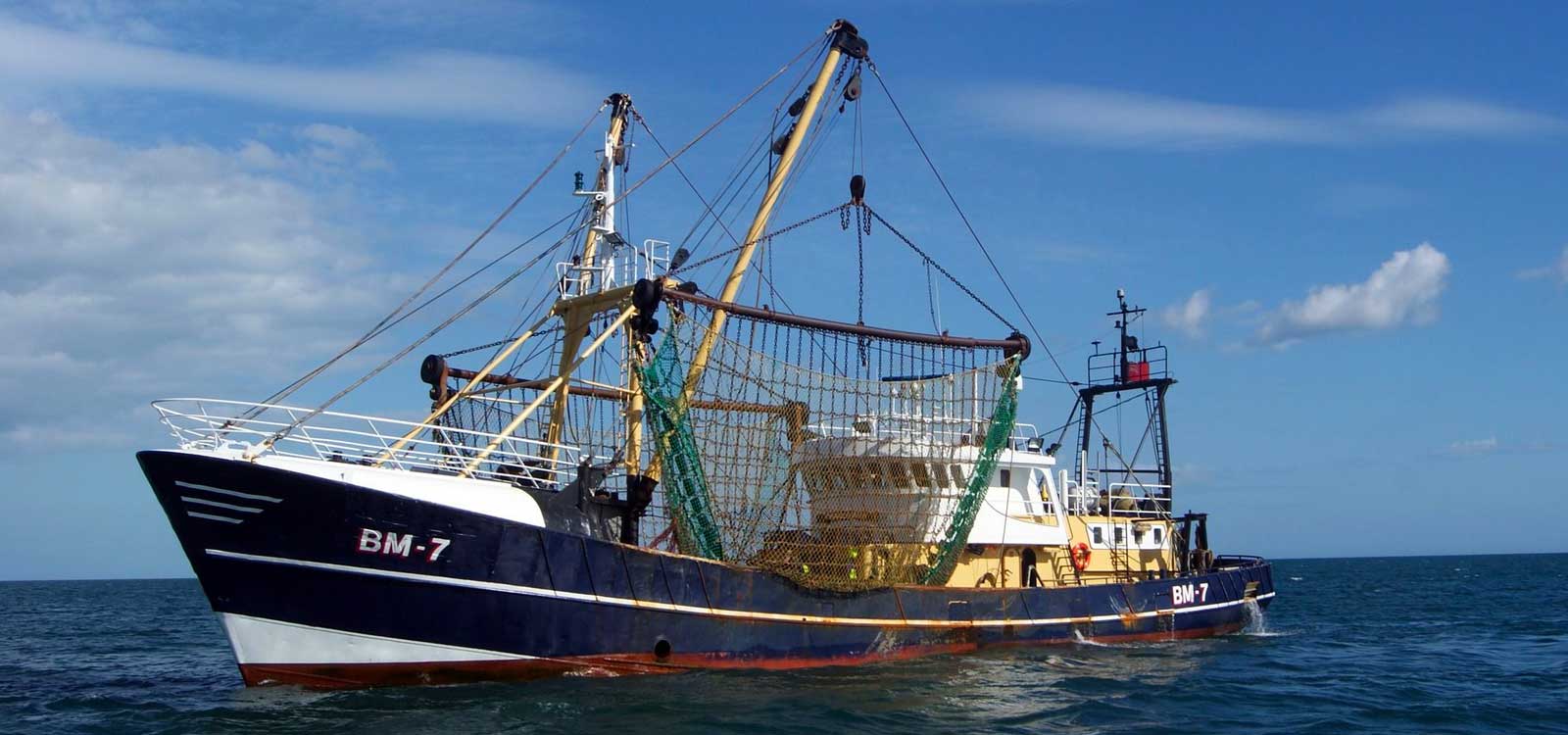
Fishing Boats - General Inspection
Deck Equipment
Lines and warps, gantries, and lifting blocks (emptying bags and cod ends), fish cutting equipment and conveyors, derricks, cranes, wire and box clips for offloading crates to the dockside. Towing points, winches and capstans, rollers, reels, power blocks and hydraulic systems to power these important items of equipment.
Pre-Sea Inspections
Freeing ports and scuppers form part of the pre-sea deck inspection. Engine room and galley inspections are included with a full list of items to check, during these essential pre-sea inspection requirements.
| Boats with Shaft Drive | Completed |
| Gear Box – check lubricating oil level | |
| Stern Glands – turn greaser two turns | |
| Dripless Stern Glands – check bellows, check all connections | |
| Propeller Shaft – check clear to turn |
Watertight Doors & Hatches
Watertight doors, hatches and compartments have their own specific requirements, including procedures when entering unventilated spaces.
Refrigeration Hydraulics & Auxiliary Engines
Refrigeration, hydraulics, and auxiliary engines are important machinery items on the inspection list.
Fishing Boats - Emergency Drills & Stops
Emergency Drills include fire practice, man overboard, helicopter rescue and abandoning ship. Practising emergency stops are essential in preventing accidents and loss of nets.
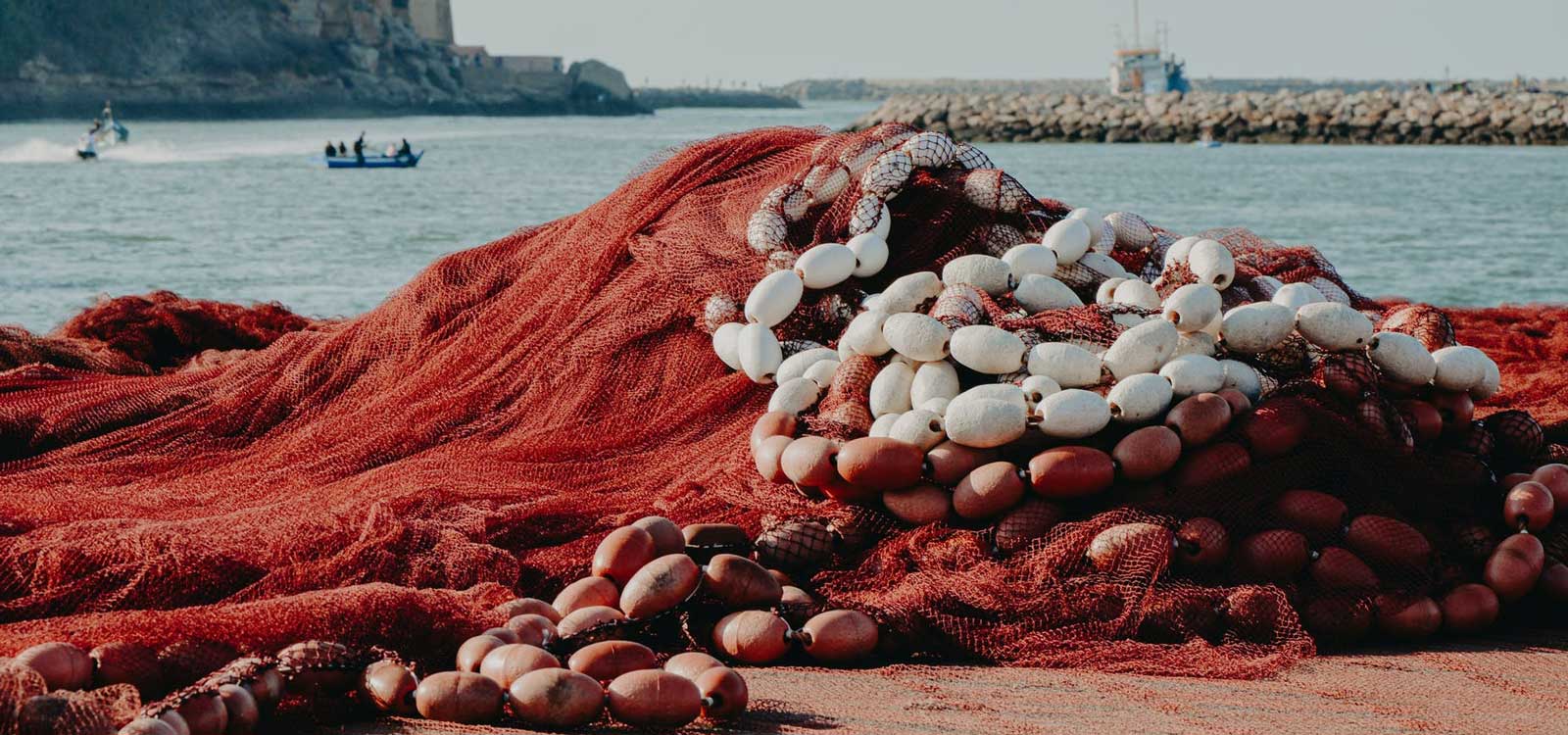
The Membership Package
Please click through to ‘Membership Desk’ to check whether your vessel, engine and drive system are included
Membership is required to access imardex-marine’s maintenance database. To become a member simply click ‘Membership Desk’ and select to pay monthly or annually where you will benefit from a discounted fee.
Benefits of Membership
At imardex-marine we expect that the membership and the use of its maintenance programmes will bring the following benefits:
- A safer boating experience for crew and passengers
- Increased operational efficiency and fewer breakdowns when underway
- Reduction in the general running costs
- Longer life expectancy of machinery
- Greater understanding and knowledge of the systems on your boat
Boat Insurance
Please click here to read our Boat Insurance information.
Services included in the Membership Package
Pre-Departure Checks - A special checklist identifies the necessary safeguards to be undertaken prior to departure. It is supplemented by a list of checks and helpful hints to be followed when underway.
Winterising (If applicable) - A guide and checklist available for winterising your Main Propulsion, Auxiliary and Domestic Systems.
Boatyard Work Guide and Check List - A comprehensive useful guide and checklist, prior to a boat yard starting work on your boat.This information has been put together with the help of the imardex-marine team and members who have many years of experience in dealing with boatyards and marine workshops.
Action after Grounding - A check list to assist the boater through a grounding scenario, and what to look for when inspecting keels, rudders and hull section, after such an event.
Back up and support from the imardex team
The imardex team is available to answer any queries or problems you may have, please send an email to This email address is being protected from spambots. You need JavaScript enabled to view it. with your telephone number, and a brief description of your query.

Miscellaneous Information
New Developments
Electric & Hybrid Marine Propulsion Systems
Imardex-Marine is introducing this important sector of the boating world.
Emission Control & Waste Management Guidelines
This new section deals with 21st Century environmental issues.
Boating Holidays
Boating Holidays with some very interesting destinations.
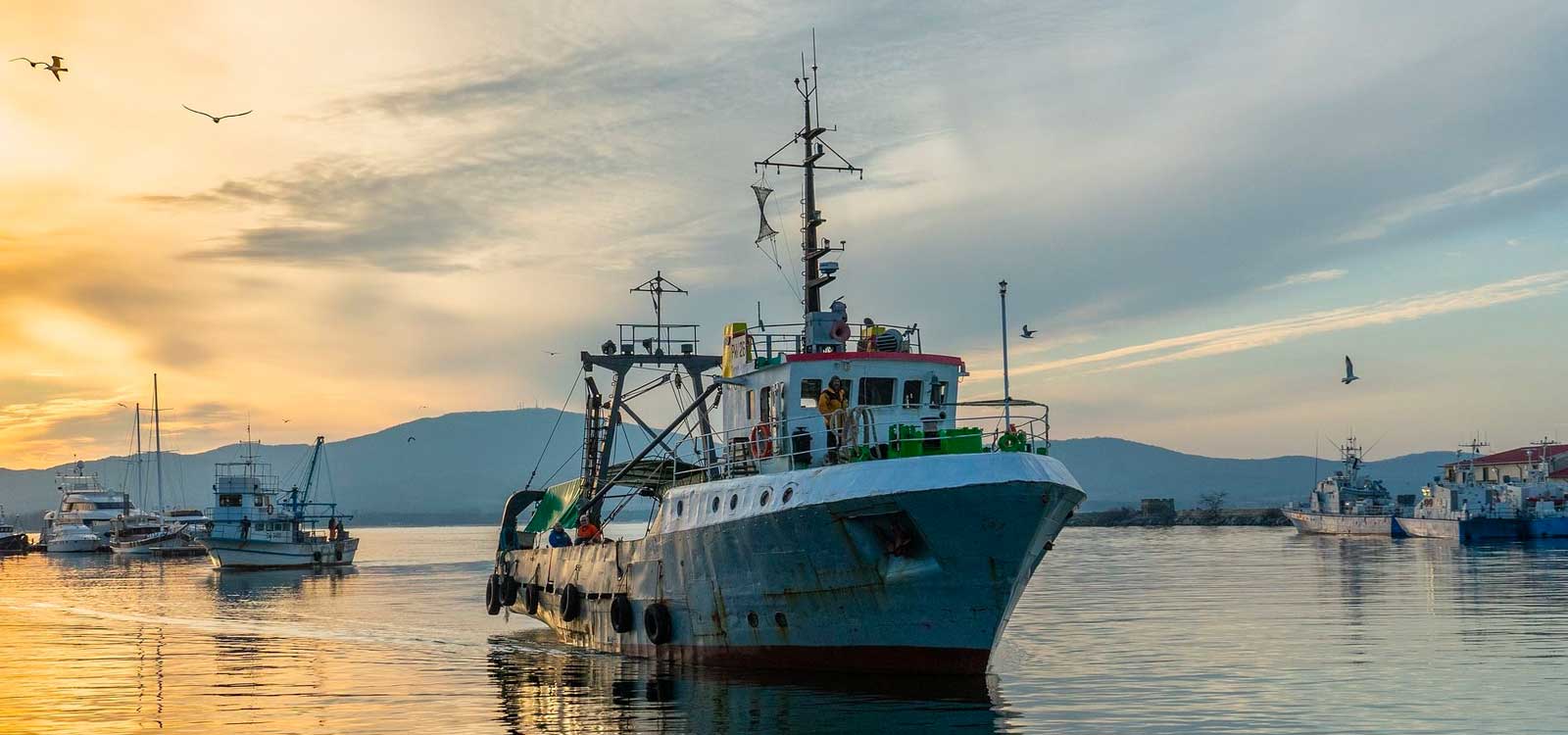
The Modern Diesel Engine its Fuel and the Environment
Modern Diesel Engines
To reduce the increasing threat to the environment and global warming, the harmful emissions of diesel engines have to be reduced. The search for cleaner emissions has resulted in engine manufacturers redesigning fuel delivery systems to the cylinder. Common rail diesel delivery being one system. Injector pressures in the 70’s was around 300 bar (4,351 psi), today pressures are in excess of 2,500 bar (29,000 psi), this higher injection pressure is a key factor in reducing an engine’s untreated emissions. It also improves atomisation by having a better fuel air mixture ratio, meaning that optimum combustion is achieved giving enhanced power output and efficiency.
Fuel & Additives
To reduce harmful emissions from diesel engines, the sulphur content of diesel fuel over the last few years has been reduced from 500 parts per million to 15 ppm. This fuel is now known as ULSD (ultra-low sulphur diesel). This dramatic reduction has resulted in problems for manufactures and operators of diesel engines and diesel fuel distributors. There is a full programme of maintenance and preventative measures to combat diesel bug outlined in the members section, entry by subscription. Engine and Generator Lubricating Oils can be sent for testing, we can advise you on this.
Diesel Engines - Maintenance
We have designed a comprehensive maintenance programme to be followed by owners of marine diesel engines. Requiring only basic skills, this maintenance programme covers all the mechanical work to keep the engine in a seaworthy condition. It does not include tasks where rebuilding is required.
Boat Engines & Drive Systems
Modern boat engines have a higher power to weight ratio and are usually more reliable and cleaner than older engines. Many now have electronic controls to optimize fuel consumption and efficiency. Our maintenance plans reflect this increase in power, by the addition of rescheduled maintenance tasks.
Posted by : The imardex-marine team

